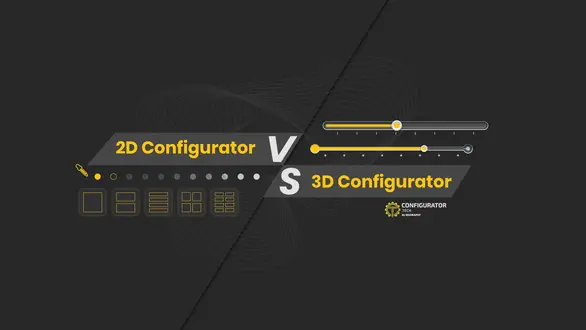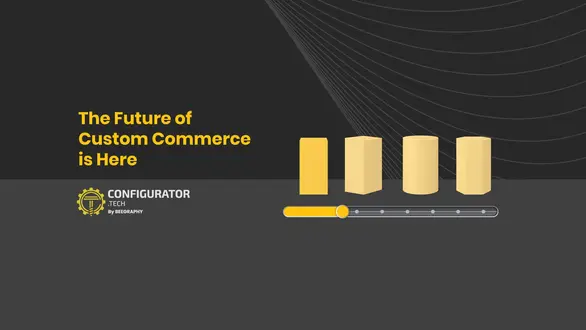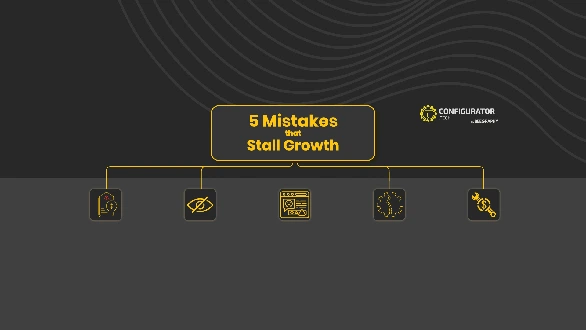The Role of Product Visualization in Building Trust for Personalized Brands
Picture two online businesses that both sell made-to-order furniture. In both cases, customers can pick materials, colours, and dimensions, but one site offers a high-quality 3D visualizer while the other relies on a handful of blurry photos. When shoppers visit the first site, they can spin a realistic 3D chair model, change its wood finish, and see how different fabric swatches look in real-time. They leave confident that what they order will match their vision. On the second site, customers only see static, low-resolution images that don't reflect their custom choices. Unsure whether the chair's dimensions or colour will translate correctly, they hesitate, and often abandon their carts. In the rare instances they do purchase, they return items that "look nothing like the picture."
This constant disappointment highlights a fundamental problem in custom e-commerce: without accurate visualization, customers feel uncertain (the "virtual-physical gap"), and that trust gap becomes a barrier to sales and satisfaction.
How Visualizing Products Quickly Builds Trust Online
Someone shopping online for a custom dining table knows precisely what they want: a walnut finish, slender legs, and just the right length to fit a specific spot at home. But buying custom furniture online can feel like a leap of faith. Even the most enthusiastic shopper can hesitate without a clear idea of what the final product will look like.
This is where product visualization plays a vital role.
When the site offers a detailed, real-time product visualizer, the experience changes completely. As the shopper selects walnut, the model instantly reflects that change. As they adjust the length, the table stretches in real-time. When they switch to a sleeker leg style, the preview updates instantly. Every customization is visible, accurate, realistic, and intuitive.
In that moment, the shopper gains clarity. They no longer need to imagine how all the pieces will come together, it's right in front of them. Visualization eliminates the guesswork that often causes uncertainty.
They also feel a sense of control. Interacting with the product, trying out different combinations, and making decisions with instant feedback creates confidence. It reassures them that what they're choosing is what they'll receive.
That control leads to an emotional connection. The shopper becomes part of the process. It's not just a product anymore, it's their custom creation. That personal involvement builds trust naturally, without needing to convince them.
For businesses, this isn't just about adding a visual feature, it's about solving a core problem in custom e-commerce: uncertainty. When shoppers see their exact configuration come to life, it reduces abandoned carts, lowers return rates, and builds credibility.
In simple terms, a product visualizer is not just about showing the product, it's about showing the customer that they're in safe hands. Customers who feel confident in what they see are far more likely to purchase.
Exploring Product Visualizer Options for Custom Products
Below are standard visualization methods you might encounter, with a brief description and their main pros and cons:
High-Resolution Image Galleries
What it does: Displays multiple 2D photographs (often professionally shot) from various angles.
Pros: Familiar to customers; relatively low cost to produce.
Cons: Static images can't reflect custom changes; they offer no live interaction, buyers still wonder how their choices translate.
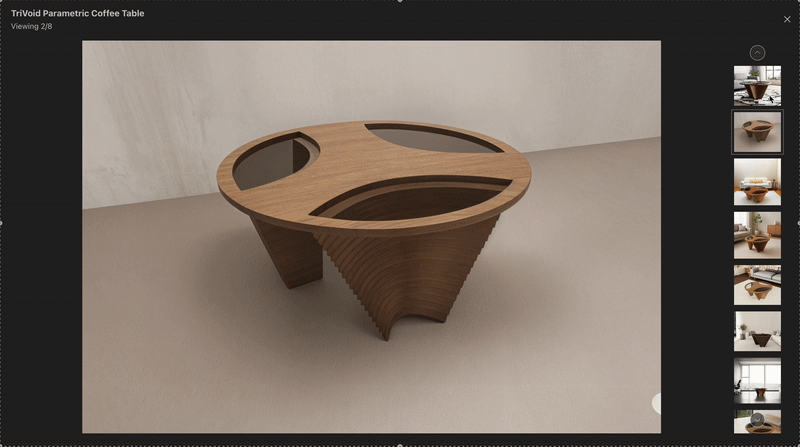
360° Spin Views
What it does: Stitches together a sequence of photos so shoppers can rotate the product on screen.
Pros: It gives a sense of depth beyond flat photos and is easy to implement for standard SKUs.
Cons: Still static concerning customization; can't show material swaps or dimensional changes.
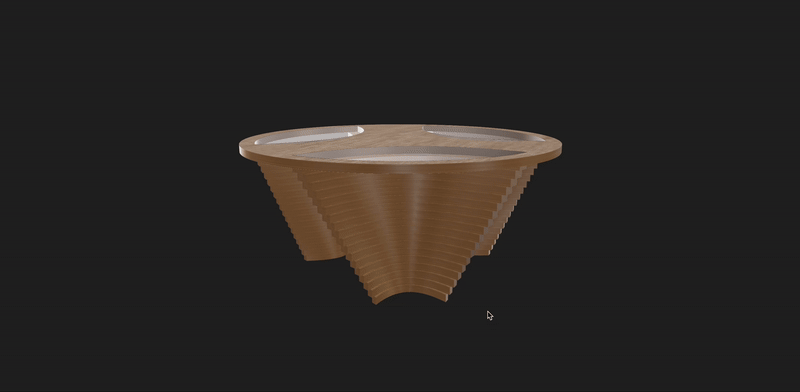
Augmented Reality (AR) Previews
What it does: It uses a smartphone or tablet to overlay a digital model of the product into the customer's real environment (for example, placing a virtual sofa in a living room).
Pros: Excellent for checking scale and fit; boosts confidence that the product will look right in a specific space.
Cons: It requires a decent camera and lighting and doesn't handle every customization parameter (colour, leg style, material).
2D Configurator
What it does: It lets customers select from dropdown menus (e.g., colour, size, add-ons) and then shows a flat preview that updates accordingly.
Pros: Lower development cost; better than static images for simple choices.
The cons are that it doesn't convey depth or real-life scale, and customers may still second-guess whether the final product matches the preview.
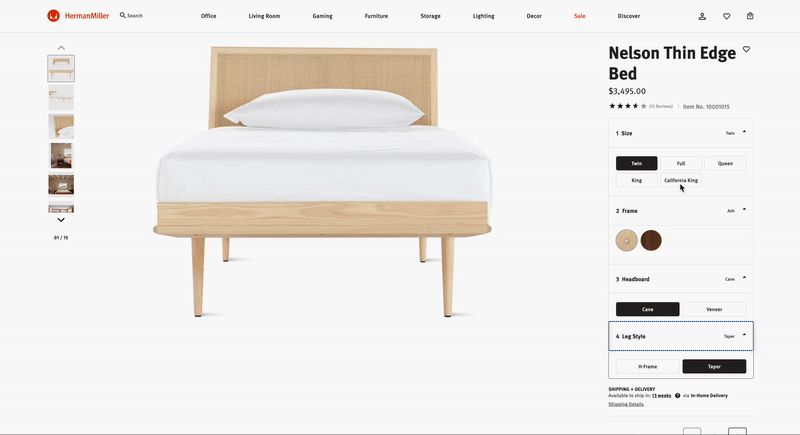
3D Product Configurator
What it does: Renders an interactive 3D model built from CAD or high-fidelity assets. Shoppers rotate, zoom, and tweak materials or dimensions, seeing instant visual and price updates.
Pros:
- True-to-Life Preview: Shoppers see a photorealistic version that reflects every custom choice.
- Instant Cost Visibility: As customers change sizes or add features, pricing updates in real time, there are no surprises at checkout.
- Rule-Based Safety: Built-in constraints prevent configurations that can't be manufactured.
- Emotional Engagement: Actively customizing the product fosters a sense of ownership, making customers less likely to hesitate or cancel.
Cons: It requires a higher initial investment in quality 3D assets and development setup.
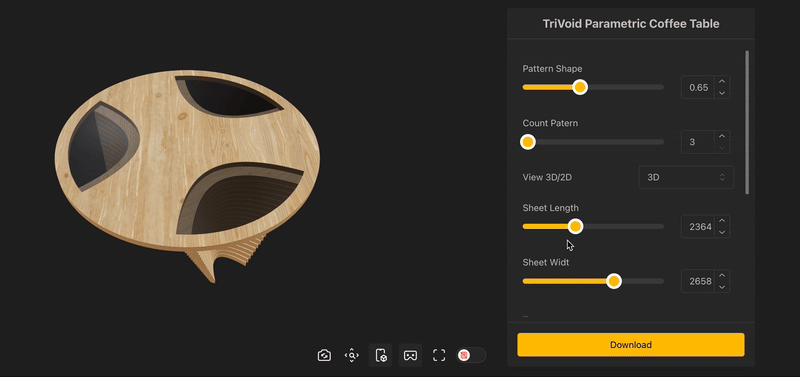
Of all these, 3D product configurators stand out for custom, made-to-order businesses. They bridge the most significant trust gaps by showing how each decision (wood grain, hardware finish, dimensions) affects the final product. When shoppers can explore every angle, test colour combinations, and verify pricing instantly, they feel confident that what they order is precisely what will arrive. If you're still debating which visualization tool to choose, the immersive clarity of a 3D configurator often proves the most powerful solution.
Turn Browsers into Buyers with Configurator.tech’s 3D Visualization
One of the biggest challenges for any made-to-order business is proving to customers that what they’re ordering online will look and feel exactly as they imagine. It’s not enough to list the features or upload a few polished photos. What builds trust is letting customers see, shape, and believe in the product before it ever reaches their doorstep.
That’s where tools like Configurator.tech come into play.
Rather than offering static previews, Configurator.tech allows you to bring your products to life, right on your website. Customers can interact with a fully 3D model in real time: rotating it, customising materials, tweaking dimensions, and seeing instant changes in both the design and pricing. This live feedback loop removes the uncertainty that often holds people back. When customers can control and visualise exactly what they’re getting, trust forms naturally.
Behind the scenes, your team doesn’t need to be fluent in 3D or software development. The platform offers a no-code/low-code setup, which means your in-house designer or product team can define how the product behaves, what can be changed, what can’t, and how the pricing adjusts along the way. This ensures that the experience your customers see is not only beautiful, but also accurate and manufacturable.
More importantly, every customisation a customer makes feeds directly into your systems. Configurator.tech integrates with popular e-commerce platforms, ERPs, or CRMs, and automatically generates the specs, drawings, or bills of materials required for production. What the customer sees is exactly what the factory gets, closing the trust gap even further.
Because it’s cloud-native, the experience is fast and accessible on any device. There’s no lag, no waiting, no confusion, just a clear, responsive design journey that mirrors the quality of your product.
In short, Configurator.tech doesn’t just make your product look good, it makes your customer feel certain. Certain that their choices are understood. Certain that their order is correct. Certain that they can trust your business. And in custom e-commerce, that certainty is what turns browsers into buyers.
Closing the Trust Gap with Real-Time Product Visualization
Visualization isn't a luxury for any business selling custom or made-to-order items online, it's a necessity. Without a straightforward way for customers to preview their unique selections, you risk abandoned carts, disappointed buyers, and costly returns. By contrast, interactive 3D configurators allow shoppers to see exactly how materials, dimensions, and add-ons will look to make confident decisions.
When customers feel they have complete transparency, seeing their custom design come to life, they experience less anxiety and more ownership. This translates to higher conversion rates, fewer returns, and stronger loyalty. Now is the moment if you haven't considered a 3D visualizer. And if you want a tool that bundles real-time previews, instant pricing, and easy integration, explore Configurator.tech as a subtle, low-code way to transform uncertainty into trust. After all, when shoppers trust what they see, they're far more likely to click "Buy."


